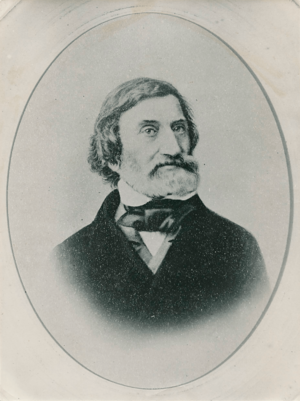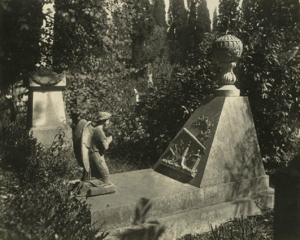Carl Ludwig Christian Rümker facts for kids
Quick facts for kids
Carl Ludwig Christian Rümker
|
|
|---|---|

Carl Ludwig Christian Rümker
|
|
| Born | May 28, 1788 Burg Stargard, Mecklenburg, Germany
|
| Died | December 21, 1862 (aged 74) |
| Education | Builders' Academy, Berlin |
| Children | Georg Friedrich Wilhelm Rümker |
| Parent(s) |
|
| Awards | Gold medal of the Institut de France Silver medal of the Royal Astronomical Society |
| Scientific career | |
| Fields | Education, Astronomy |
Carl Ludwig Christian Rümker (born May 28, 1788 – died December 21, 1862) was a famous German astronomer. He spent his life studying the stars and planets. He even discovered a comet!
Contents
Carl Rümker's Early Life (1788-1821)
Carl Rümker was born in Burg Stargard, a town in Mecklenburg, Germany. His father, J. F. Rümker, was a court-councillor. From a young age, Carl was very good at mathematics.
He studied at the Builders' Academy in Berlin. In 1807, he finished his studies as a master builder. But instead of building things, he chose a different path. He taught mathematics in Hamburg until 1809. After that, he moved to England.
From 1811 to 1813, Rümker worked as a midshipman for the British East India Company. He also served in the British merchant navy. In 1813, he was forced to join the Royal Navy by a pressgang.
He worked as a schoolmaster on Royal Navy ships until 1817. He served on HMS Benbow, Montague, and Albion. While on the Albion, he even took part in a big expedition to Algiers in 1816.
In 1817, he met an Austrian astronomer named Baron Franz Xaver von Zach. This meeting inspired Rümker to focus on studying astronomy. From 1819 to 1820, he was the director of a navigation school in Hamburg.
Carl Rümker in Australia (1821-1830)
In 1821, Carl Rümker traveled to New South Wales, which is now part of Australia. He went there to work as an astronomer at an observatory. This observatory was built in Parramatta by Sir Thomas Brisbane. James Dunlop was his assistant there.
Discovering a Comet and Awards
Carl Rümker made an important discovery in Australia. On June 2, 1822, he rediscovered Comet Encke. For this achievement, he received two special awards:
- A silver medal and £100 from the Royal Astronomical Society.
- A gold medal from the Institut de France.
Challenges and Leadership
In June 1823, Rümker had a disagreement with Sir Thomas Brisbane. He left the observatory. He had been given a large piece of land, about 1,000 acres (4 square kilometers), near the Nepean River. This land was given to him because he promised to continue his scientific work.
However, Brisbane later tried to reduce the land grant. He said Rümker had not kept his promise. But the government official, Henry Bathurst, decided not to change the grant.
After Brisbane left, Rümker was put in charge of the observatory again in May 1826. He was the first person to be called the "government astronomer" in Australia. He planned to measure the arc of the meridian, which is a way to map the Earth. But he needed special instruments from London. Rümker left Australia in January 1829.
Published Works from Australia
The results of his observations in Parramatta were published in important scientific journals. These included the Philosophical Transactions of the Royal Society and the Royal Astronomical Society's Memoirs.
Rümker also wrote an article for the Geographical Memoirs of New South Wales. This was the first collection of scientific papers ever published in Australia. While in England, Rümker had another disagreement, this time with James South, who was the president of the Royal Astronomical Society. Because of this, Rümker was dismissed from British government service.
Return to Hamburg, Germany (1830-1857)
In 1830, Rümker returned to Europe. He took over as the director of the new Hamburg Observatory after the death of Johann Georg Repsold.
Star Cataloging Work
His most important work during this time was creating catalogs of stars.
- In 1832, he published a first catalog of stars from the Southern Hemisphere.
- From 1846 to 1852, he published his huge catalog of 12,000 stars.
He was the director of the Hamburg Observatory (Hamburger Sternwarte) from 1833 to 1857. The city of Hamburg funded his work.
Later Years and Lasting Impact (1857-1862)
In 1857, Rümker moved to Lisbon, Portugal. He passed away there in 1862.
Family Legacy
Carl Rümker's son, Georg Friedrich Wilhelm Rümker, also became an astronomer. He was born in Hamburg in 1832. Georg took over as director of the Hamburg Observatory in 1857 and stayed in that role until his death in 1900.
Observatory and Catalog Legacy
The original Hamburg Observatory building was later taken down. The observatory moved to a new location in Bergedorf for better viewing conditions. From 1901 to 1922, the new observatory continued to observe the 12,000 stars from Rümker's catalog. A new version of his catalog, Carl Rümkers Hamburger Sternverzeichnis 1845.0, was published in 1923.
Named After Him
A special place on the Moon is named after him! The lunar massif Mons Rümker is a tribute to his contributions to astronomy.
Carl Rümker's Notable Writings
Carl Rümker wrote several important books and catalogs during his career:
- Preliminary catalogue of fixed stars, etc. (1832)
- Handbuch der Schiffahrtskunde (Handbook of Navigation) (1857)
- Mittlere Örter von 12.000 Fixsternen (Mean Positions of 12,000 Fixed Stars) (1843–1852, with a new series in 1857)
- Längenbestimmung durch den Mond (Longitude Determination by the Moon) (1849)


